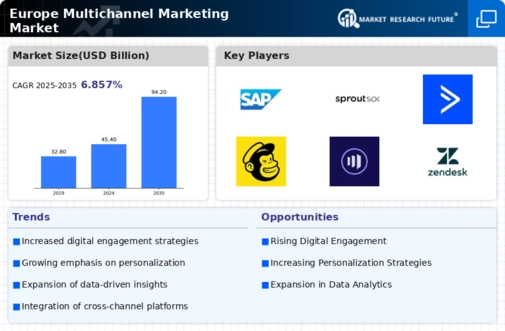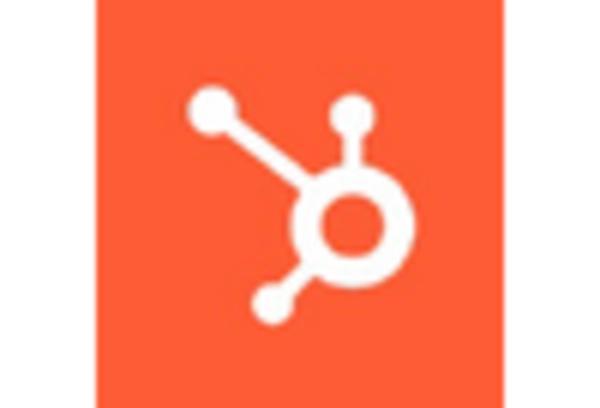Rising Consumer Expectations
Consumer expectations in Europe are evolving, significantly impacting the multichannel marketing. Today's consumers demand seamless experiences across various channels, including online and offline interactions. A recent survey indicates that 75% of consumers expect brands to provide consistent messaging regardless of the platform. This shift compels businesses to adopt multichannel strategies that ensure a cohesive customer journey. Companies that fail to meet these expectations risk losing market share to competitors who prioritize customer experience. As a result, organizations are increasingly investing in multichannel marketing solutions to enhance customer satisfaction and loyalty, which is likely to propel the growth of the multichannel marketing in Europe.
Increased Focus on Data Privacy
As data privacy regulations tighten across Europe, the multichannel marketing is witnessing a shift in how businesses approach customer data. The implementation of the General Data Protection Regulation (GDPR) has heightened awareness regarding consumer privacy rights. Companies are now required to adopt transparent data practices, which can influence their marketing strategies. This focus on compliance may lead to increased investment in secure data management solutions, which could enhance customer trust and loyalty. Consequently, businesses that prioritize ethical marketing practices are likely to gain a competitive edge in the multichannel marketing market in Europe, as consumers become more discerning about how their data is used.
Growth of E-commerce and Digital Sales
The growth of e-commerce and digital sales channels is a pivotal driver for the multichannel marketing in Europe. With online retail sales projected to reach €500 billion by 2025, businesses are compelled to adopt multichannel strategies to capture this expanding market. The convenience of online shopping has led to a shift in consumer purchasing behavior, with many preferring to research products online before making in-store purchases. This trend necessitates a cohesive marketing approach that integrates digital and physical channels. Companies that effectively leverage both channels are likely to see increased sales and customer engagement, thereby contributing to the overall expansion of the multichannel marketing market in Europe.
Technological Advancements in Marketing Tools
The multichannel marketing market in Europe is experiencing a surge due to rapid technological advancements in marketing tools. Innovations such as artificial intelligence and machine learning are enabling marketers to analyze consumer behavior more effectively. This allows for the creation of targeted campaigns that resonate with specific demographics. In 2025, it is estimated that the adoption of advanced analytics tools will increase by approximately 30%, enhancing the ability of businesses to engage with customers across multiple platforms. Furthermore, the integration of automation tools is streamlining marketing processes, reducing costs, and improving efficiency. As a result, companies are likely to invest more in multichannel strategies, thereby driving growth in the multichannel marketing in Europe.
Emergence of Social Media as a Marketing Channel
The emergence of social media as a dominant marketing channel is reshaping the landscape of the multichannel marketing in Europe. With over 60% of the population actively using social media platforms, businesses are increasingly leveraging these channels to engage with consumers. Social media not only facilitates direct communication but also allows for targeted advertising based on user preferences and behaviors. As brands recognize the potential of social media to drive customer engagement, they are likely to allocate more resources to multichannel marketing strategies that incorporate these platforms. This trend is expected to significantly influence the growth trajectory of the multichannel marketing market in Europe.


















Leave a Comment